”The genuine friendship, and the enormous benefit it brought to an artist still carving out his reputation, made Turner’s behaviour in 1814, when he put a painting in for the annual British Institution prize, bewildering:( Ian ) Warrell is still baffled by the incident.
The prize was independent of any school or institution, given by a group of wealthy art patrons – including Egremont. Turner as ever was outrageously late, putting in his entry days after the deadline without apology. It was an instantly recognisable version of an instantly recognisable painting – one of the gems of Egremont’s collection: his 1654 Claude Lorrain, Landscape with Jacob, Laban and His Daughters. To the judging panel, Turner’s version, Apullia in Search of Appullus, was not a homage but a parody, with one of the figures looking mockingly at the viewer, denigrating not just the original but the entire competition. ”
The extent of Joseph William Mallord Turner’s originality has been revealed only gradually by the series of aesthetic revolutions that have transformed our way of looking at art since his death in 1851. His long career carried him from realistic beginnings to an abstract conclusion, which is also the history of modern art.
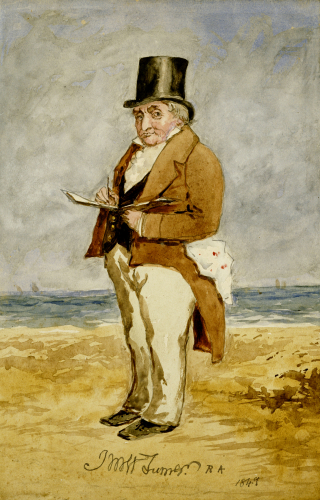
Full Length Portrait Of Joseph Mallord William Turner, R.A.(1755-1851). Charles Martin (1812-1906). Pencil And Watercolour
By hindsight it can be recognized that the Turner- to- be was nascent in the early oils exhibited at the Royal Academy in his early twenties. On the surface these followed closely enough the subject matter that landscape painters found popular and salable; scenic spts of local interest, frequently with the ruins that were so romantically appealing to tourists. But, among these is a picture of Dunstsanburgh Castle which is subtitled ”Sub-rise after a Squally Night” , and that is the real subject. Likewise, a view of Millbank is only secondarily topographical; the scene is one huge receptacle for moonlight. ”Morning Amongst the Coniston Fells” was accompanied in the Academy catalogue by Lines from Milton’s ”Paradise Lost” beginning. ”Ye mists and exhalations”, and these rise in the distance, an effect of nature that one day would engulf entire canvases in chromatic fantasies and lead Constable to say, half ridiculing and half admiring, that Turner painted with tinted steam.
The most revealing of the literary quotations that Turner chose for the catalogues at this time accompanied a painting of Buttermere Lake in the exhibition of 1798:
Till the western sky the downward sun
Looks out effulgent-the rapid radiance instantaneous strikes
Th’ illumined mountain- in a yellow mist
Bestriding earth-the grand ethereal bow
Shoots up immense, and every hue unfolds
”And every hue unfolds” is a prophecy of Turner’s development just as the ”yellow mist” forecasts a passion for the color so great that in his old age Turner was caricatured as a short, squat figure, his oversized head bearing a great handsome beak of a nose, with a bucket of yellow paint and a mop, swabbing away at a large canvas. Turner had borrowed the lines accompanying ”Buttermere Lake” from James Thomson’s ”The Seasons” seventy years after they were written. But as a description of a Turner painting they might have been even more appropriate in another forty years, when Turner had discovered the miracle of the Mediterranean light and the technical means of apotheosizing it in paint. Light, by then, had become for him the ul
te dynamic force, the abstraction of what Thomson had thought of as the heart of nature.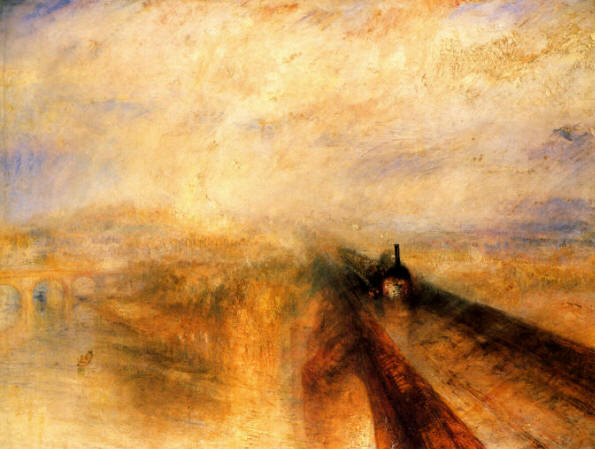
Turner. rain Steam and Speed. Turner merged storm and steam in this picture of a train crossing the Taplow-Maidenhead viaduct. It was probably the first major painting inspired by the industrial revolution. d
Turner had also discovered Sarah Danby, the widow of a composer and organist, and had begun an affair with her about 1798, the same year as the exhibition of ”Buttermere Lake”. The affair lasted at least ten years and produced two daughters to add to the three Sarah had already borne to her husband. Maddeningly, little is known about Sarah Danby, but since one of her legitimate daughters married a composer and organist of respectable standing, and since one of Turner’s daughters, Evelina, married a respectable consular official, Sarah must be imagined as a woman who maintained a respectable position of her own. That the youthful Turner was a combination lover and protege to this cultivated woman is entirely without foundation, but it seems likely all the same.
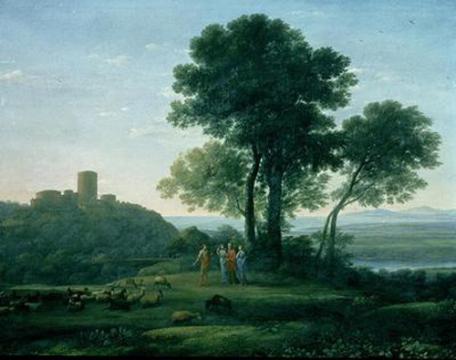
Claude Lorrain. Landscape with Jacob, Laban and his Daughters. 1654.Tom Lubbock: ''In short, these figures are in every way extraneous. They're mis-fits to the scene, and they're simple to remove, and they're not missed when they're gone. And yet Claude puts them in. Are they a mistake, an old habit? That's one explanation: the artist was simply unable to abandon narrative subject-matter, unable to devote himself (as he should have) to pure landscape. Or is there something positive that they give to his landscape painting? There is. What they give is precisely their extraneousness - or to put that another way, their contingent presence. They aren't merely a distraction. What they're doing is intimating that they might easily not be here. What these added-in figures bring to this landscape is a sense of temporary visitation.''
The picture of this ill-educated young man poring over Milton and Thomson, possessed of a charming mistress, and having brought himself by the age of twenty-five to a position of prominence on his own terms against the grain of gthe snobbish, competitive art world, is an impressive and happy one. But it is given a different cast by a fact of Turner’s life that must have been of central importance, both hen and for the rest of his life. His election to the Royal Academy, a professional triumph, coincided with a personal tragedy, his mother’s final reduction to hopeless insanity.
In 1800 she was admitted to Bethlehem Hospital, and when she was discharged as incurable the following year, she was put into a private asylum where she died three years later. Turner left no autobiographical comments, and the inadequate records of his contemporaries sound as if they were unaware of his mother’s madness. But certainly it was not something that Turner accepted easily. Rather, it might have explained why, in spite of his strong sexuality, he never married; why, in spite of his success, he felt a basic insecurity that led him to grasp sources of income that he did not need and hoard money; why in spite of a few close friendships, he remained such a loner in a society where he could have been a lion.
Soon after his mother was committed to Bethlehem, his father closed the barbershop and moved in with his son as a general handy man. Turner was utterly without social ambitions; he and his father lived simply, almost roughly, without any interest in the appurtenant luxuries of the successful Londoner- the fine furniture, the silver, the servants, and the parties. But whatever else they had in common, they shared a love of money for its own sake, which is usual enough among poor people who have begun to earn large sums. The two Turner’s developed a reputation for being misers, and there were stories about the shabbiness and squalor in which they lived. But this tolerance of primitive domesticity can be explained as a natural indifference on Turner’s part to vanities that would only complicate his life by taking more time, and more money, than they were worth. Turner was simply too busy to bother.
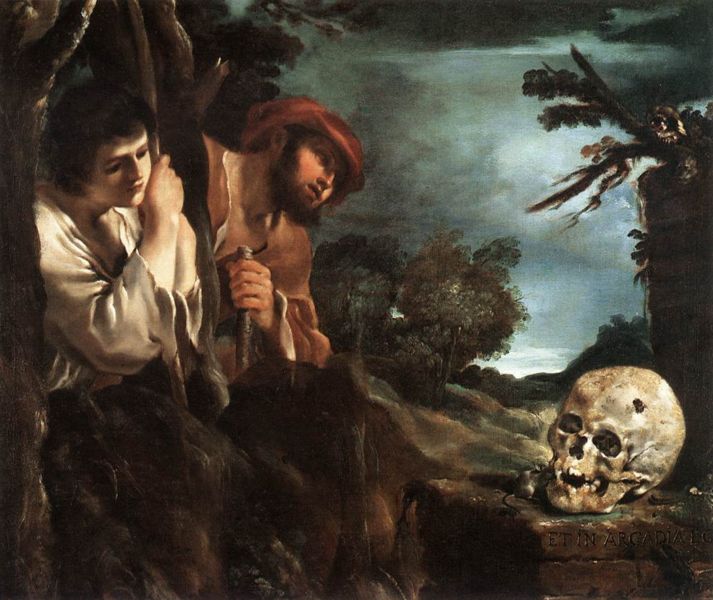
www.randomknowledgefiles ''Et in Arcadia ego (also known as The Arcadian Shepherds) is a painting by the Italian Baroque artist Giovanni Francesco Barbieri (Guercino), +/- 1620. Et in Arcadia ego (“I am in Arcadia too”) appears onto the cippus. It’s a moral reference to death. Remark also the iconography of the memento mori theme, a genre of artistic creations that vary widely from one another, but which all share the same purpose, which is to remind people of their own mortality. ''
When he was twenty-seven, Turner was elected to full membership in the Royal Academy. He could sell anything he wanted to, and seeing no point in working through intermediaries , in 1804 he opened his own gallery in Harley Street, where he kept twenty to thirty works in exhibition. He also moved into a better house, although not a better kept one, in Upper Mall, Hammersmith. Then, in a few years, in 1810, he took a large house in Queen Anne Street, which he eventually remodeled to include his gallery-salesroom.
He was constantly busy and constantly successful, but he was also constantly looking for something that eluded him as an artist. He traveled incessantly looking for it, seeming to not know quite what it was, except that the peaceful English countryside did not offer it to him. He could and often did paint landscapes of great serenity, but the closed horizons and the intimate pastoral comforts that so delighted Constable were cramping to Turner. He traveled through England, Wales and Scotland. In 1802, when the Treaty of Amiens was signed and the restrictions on visits to the Continent were lifted, he headed straight for the Alps, letting paris and the Louvre wait for a visit on his way home.
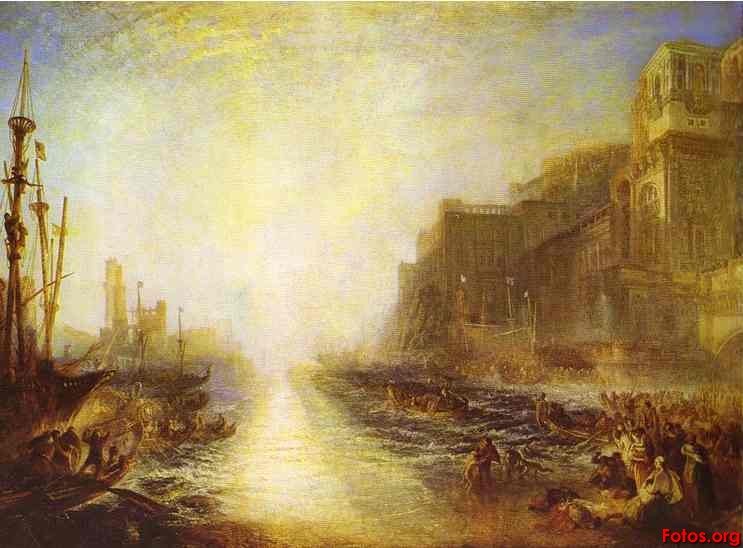
www.photo.org. Turner. ''"Regulus," for example, tells a gruesome tale probably drawn from Oliver Goldsmith's "Roman History," which Turner had in his library. The tragic hero Marcus Atilius Regulus was a Roman consul-general who, captured by the Carthaginians in the First Punic War, was released on parole and sent home to persuade his countrymen to sue for peace. Instead, Regulus urged the Senate to fight on, but, being an honorable gent, returned to Carthage to face the music. To punish him for violating their trust, his captors cut off his eyelids and stood him in the noon sun to go blind. Then they locked him in a barrel with the nails pointing inward to finish the job. ''
”For Turner, light was not just the enabler of vision. Especially in his histories, he conceived of it as a dramatic actor: the vehicle of emotive as well as optical illumination; the agency of romantic disorientation or, in its absence, the demon of eclipse. And all these states of vision were personal and local, the spectacles of his own story. For Turner, the ultimate subject was always the history of Britain, and he felt that subject in his marrow. Yes, he travelled, relentlessly. Yes, there was Venice and Mt. Cenis, and the Loire and the Alps, the Rhine and the Rhône and the Seine. But he always came home; at heart he was a self-conscious British patriot and, more than that, a Londoner, born and bred a five-minute walk from the Thames. …
Such alterations exercised the most strenuous minds of early Victorian Britain. Many of them, like the architect A. W. N. Pugin and Thomas Carlyle, eulogized what they imagined to be a lost, devotional, architecturally Perpendicular, Christian Albion and waxed wrathful about the materialist hell of the Age of Machinery, with its philistine utilitarianism and worship of what Ruskin, the sherry merchant’s son, called, contemptuously, “the goddess of Getting-On.” In an implausible overreading of “The Goddess of Discord Choosing the Apple of Contention in the Garden of the Hesperides,” Ruskin recruited Turner as an anti-capitalist, but the truth is that his mills were usually neither dark nor satanic. His sketch of the town of Dudley, made around 1830, when the possibility of an English revolution hung in the air along with bituminous fumes, gives obvious prominence to the emblems of an older world—church and castle barely holding their own amid the chimneys. Consuming fires, Turner seems to have thought, were just the medium through which the country had to pass to come to a new national life.” ( Schama )


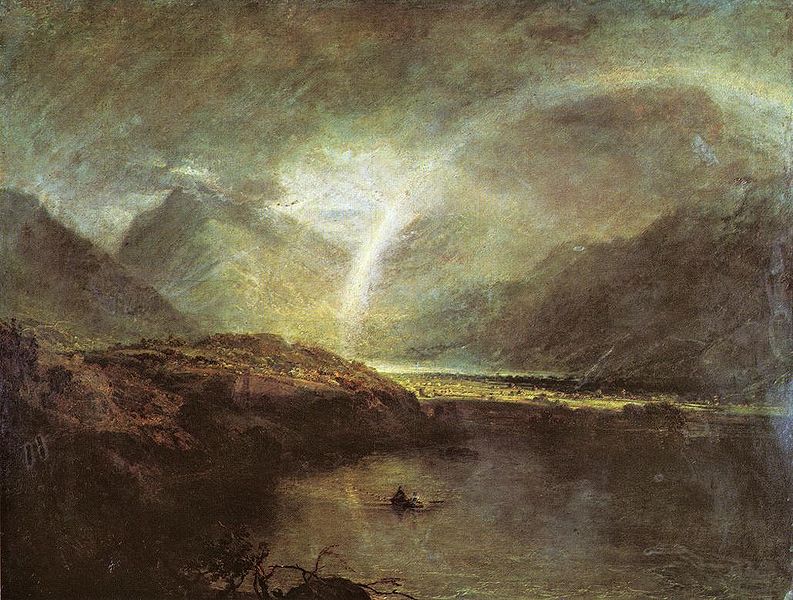
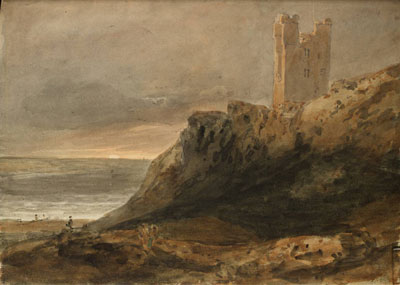
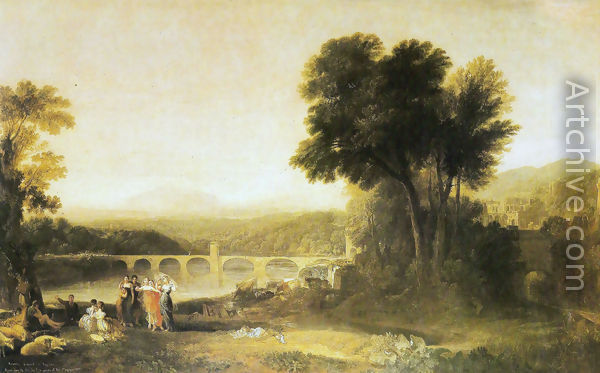
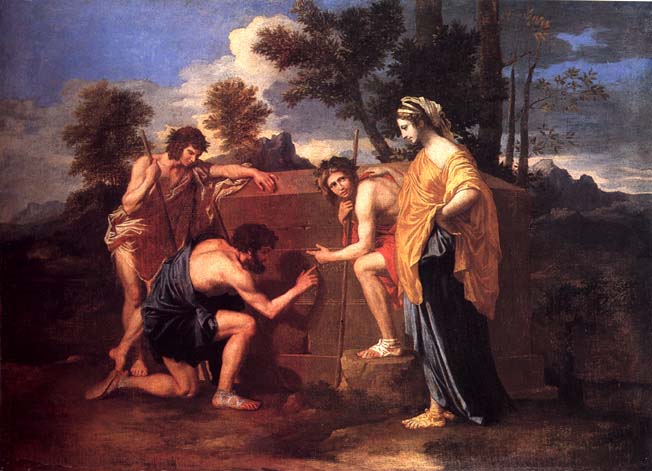



 COMMENTS
COMMENTS